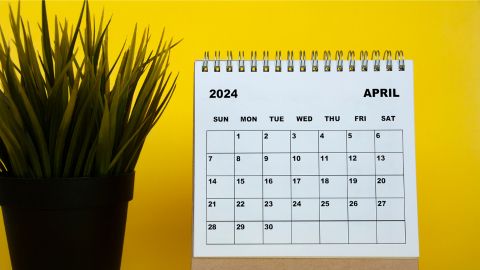Go ahead, brag a little
Ever wondered why the media picks up on certain research findings and ignores so many other (perhaps more scientifically important) ones? Or maybe why a colleague was highlighted in the campus magazine or company newsletter while you were overlooked? It usually has a lot to do with the personalities of and actions taken by the featured researchers themselves.
A recent post on “Overheard in the Newsroom,” a website where media types grumble about their jobs:
Reporter doing a phone interview: “Please slow down, professor. You’ve been researching this topic for a decade. I’ve been researching it since lunchtime.”
Getting your research news to the public isn’t easy, but it’s not impossible. The key is to create a narrative that can compete with organizational reportage of new hires, high-dollar grants and board meetings or media coverage of celebrities, sports, natural disasters, political snafus and crime. That means you have to be a good storyteller.
Most of the time, getting publicity starts with the formulation of a news release for the media or a story for an organizational publication.
Here’s how to get the ball rolling
1. Understand the role of a news release or organizational publication.
News releases are meant to entice reporters to write and film stories about your work. Organizational publications are intended to reach a broad audience too, including alumni and investors or donors. Both are usually written in language that the general public — not just your colleagues — can understand.
2. Get to know your institution’s communicators.
Academic institutions, nonprofits, journal publishers and businesses employ writers and public relations professionals who can get your story to the media and other audiences. Some institutions have centralized communications offices; others have departmental or college-level offices; still others have campus- or company-wide magazines or alumni publications. (Tip: On your introductory e-mail to your communicator, the contents of which are described below, copy your dean or department head. A little pressure from the top can only help.)
3. Figure out how you fit into the media-relations process.
First, work with your communicator to craft a news release. Then he or she will run it by the involved parties and distribute it to the media. Interested reporters interview you, ask questions, take notes, capture audio and video, and produce an article or segment. Neither you nor your communicator has control over when, or if, a media outlet will use the story. Nor will you or your communicator review the content in advance. That’s why it is vital to make sure reporters really understand what you tell them. (Note: You will have more editorial control if you’re working with an internal publication, but try to let the wordsmiths do what they do best. They wouldn’t dare come into your lab and instruct you on your work.)
4. Answer the following questions in your introductory e-mail to your communicator.
Make your responses lengthy and oversimplified for a nontechnical audience.
- Who is involved in the project? Include titles, affiliations and duties. Do not use abbreviations or jargon. Note who should be consulted about or quoted in the release or article.
- What research results are you announcing? Use terms an eighth-grader would understand. Use anecdotes or examples of everyday objects to make technical matters clear for readers without scientific backgrounds.
- What agencies or foundations funded the research? If other entities supported the research in unique ways, include that as well.
- Where was the work conducted? Departments don’t matter to the media, but agencies, institutes, research centers and universities do. Departments do matter for internal publications.
- Why would your work interest your audience? If you want to reach newspaper readers or TV viewers, make a solid case for what makes your research unique or powerful in layperson’s terms. Provide links to recent news coverage of this research area if possible. (Tip: Study how the technicalities have been explained in past news reports.)
- How will your work immediately or one day affect the public? If your discovery, technique or project will affect those with a specific disease, tell your communicator about that disease. How many people does it affect in the U.S. or worldwide? What is living with it like? (Tip: Try to make the story more about people and less about the technicalities of science.)
- How can you use visuals to complement a TV or print report? What places, people or things can be photographed or videotaped? What kind of images do you already have? When will you be available for a photo shoot by your institution? (Note: Media outlets usually will shoot their own photos.)
5. Keep your commitments.
When you agree to go public, you are making a significant commitment of time, patience and good faith. Sometimes it can take several weeks to complete a news release or story, depending on the availability of collaborators and the time needed for the approval process. Once a news release is distributed to the media, you must be flexible, willing and available for all interview requests. Provide your communicator with your e-mail address and work, home and mobile phone numbers, because you never know when the media will call. (Remember: Never say anything to a reporter that you don’t want on the record.)
A nose for news: tips from the pros
“If your research involves humans, and you want a story, don’t even pitch me until you have identified a patient or subject who is willing to share his/her story, using his/her real name, or someone who could be helped, someday, some way.
“If your research is more abstract, be prepared with storytelling techniques: an exciting narrative about the obstacles that were overcome, a ‘eureka’ moment or a discouraging moment. Recruit other people for interviews, not just yourself: people who helped along the way (in the lab, in the field, in your childhood).
“Think of metaphors, classical allusions, biblical tales, songs, visual analogies – any way to translate your research into language a layperson can understand. The researchers who get featured have a way of explaining things visually in plain language. If I can’t see it, I can't report it.
“Bonus points: emotion and personality. Be sure to include why you are passionate about what you do. What motivated you to pursue this line of inquiry?”
– Carrie Feibel, health and science reporter for Houston Public Radio
“My main goals are to help researchers feel comfortable talking to the media and show scientists how best to convey their main points. Sometimes we can interest the New York Times or CNN or a top blog through a freelance science writer. But even a mention in a small technical newsletter can achieve big results. One time a release that I wrote for an agronomy researcher piqued the interest of the publisher of a biotech industry newsletter. The result was that a company executive contacted our scientist, and they partnered to commercialize his discovery.”
– Susan A. Steeves, media relations manager and
science writer at Virginia Polytechnic Institute and State University
“When you are trying to explain your project to nonscientists, ask yourself: Does it pass the grandma test? If your grandma can’t understand what you work on and why you are working on it, then you need to change your explanation.”
– Geoff Hunt, ASBMB policy fellow
“The biggest thing I look for in a pitch is how your discovery or research affects everyday people. Don’t just tell me what you did – take that one step further and explain the practical implication of your work. What does it mean for the woman next door? Why should she care? Are there any particular segments of the population it will affect more than others? The better you spell this out for me, in terms I actually understand, the more likely I am to write about you and your work.”
– Alexis Grant, editor at U.S. News & World Report
“My criteria for running a hard science story: a) relevance of research to everyday lives, b) availability of interesting photography (not the low-resolution headshot taken in the basement laboratory for your department website) and c) a topic that lends itself to at least two sigh-inducing science puns I can work into the first and last sentences.”
– David Raffetto, former university alumni magazine editor
“This is about humans.”
– Christopher Joyce, editor/correspondent for NPR’s science desk
“Analogies! People (and most notably, media) definitely appreciate a well-developed explanation for highly complicated research topics. If you can liken it to something common, not only will it help the readers comprehend how it works or why it’s important, but it will go a long way in helping your (public relations) person sell the story.”
– Lindsay Lewis, director of communications
for the Cullen College of Engineering at the University of Houston
“Is there a quantifiable outcome that can be tied to the goal of your research, such as saving a child’s life or reducing the incidence of an illness in an entire village? Making research sexy to the public means finding a human-interest angle.
“Take breast cancer research. Everyone can relate to breast cancer on some level. Half of us are women; every man has had a mother. Occasionally breast cancer even occurs in men, which is news in itself. Fifty years ago, breast cancer wasn’t discussed in polite company, but now it could be argued that breast cancer research receives a disproportionate share of publicity, which no doubt plays a part in research funding. Yet other common cancers, such as prostate and lung, don’t necessarily get the attention they deserve. Finding that angle can be a challenge. No one is better equipped to do that than the people involved in the research.”
– Brenda K. Gunter, communications consultant,
former communications manager at the
University of Texas M.D. Anderson Cancer Center and former journalist
Enjoy reading ASBMB Today?
Become a member to receive the print edition monthly and the digital edition weekly.
Learn moreFeatured jobs
from the ASBMB career center
Get the latest from ASBMB Today
Enter your email address, and we’ll send you a weekly email with recent articles, interviews and more.
Latest in Careers
Careers highlights or most popular articles

Calendar of events, awards and opportunities
Apply for our Advocacy Training Program by April 19. Plus, submit your entry for molecule of the year!

So, you went to a conference. Now what?
Once you return to normal lab life, how can you make use of everything you learned?

Touching the future from the bench
Scholar, scientist, teacher and mentor Odutayo Odunuga discusses the important roles of the institutional PI, his journey and his research.

Calendar of events, awards and opportunities
Apply for our IMAGE grant writing workshop by April 15 and our Advocacy Training Program by April 19. Plus, submit an abstract for our transcription meeting in September!

A look into medical writing
Our careers columnist spoke with Ashlea A. Morgan at Chameleon Communications International to get a sense of one type of work a medical writer can do.

Embracing serendipity
NIGMS Deputy Director Dorit Zuk describes her scientific journey and offers tips on making career changes.

